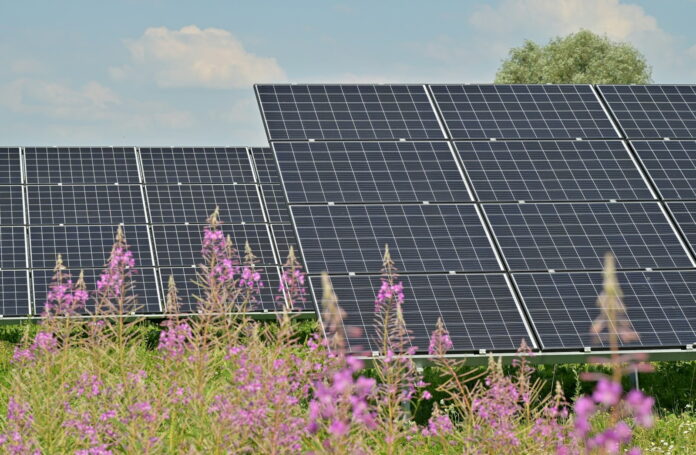Renewable energy is no longer a distant dream or a luxury for the environmentally conscious elite. It has become a practical and cost-effective option for small households looking to reduce their carbon footprint and energy bills. With advancements in technology and increased awareness, homeowners now have a variety of renewable energy sources to choose from, including solar, wind, and geothermal energy. Each of these options offers a unique set of benefits and can be tailored to meet the specific needs of a small household. In this article, we will explore the practical aspects of installing and using renewable energy sources in small households, providing you with the knowledge to make informed decisions for a sustainable future.
Assessing Your Household’s Renewable Energy Potential
Before diving into the world of renewable energy, it’s crucial to assess your household’s potential for harnessing these resources. Start by evaluating your home’s location, climate, and energy consumption patterns. For instance, a house with a south-facing roof without significant shading is ideal for solar panel installation. Similarly, areas with consistent wind speeds can benefit from wind turbines. Geothermal energy requires specific geological conditions that may not be present everywhere.
Conducting an energy audit can also help identify areas where energy efficiency can be improved, which is an essential step before investing in renewable energy systems. This assessment will give you a clearer picture of the size and type of system that would be most effective for your home. Additionally, researching local regulations, incentives, and subsidies can provide financial support and guidance on the feasibility of your renewable energy project.
Step-by-Step Guide to Installing Solar Panels in Your Home
Solar panels are one of the most popular renewable energy options for small households due to their relative ease of installation and maintenance. Here’s a step-by-step guide to getting solar panels up and running in your home:
1. Site Assessment: Hire a professional to assess your roof’s suitability for solar panels, including orientation, angle, and structural integrity.
2. System Design: Based on your energy needs and the assessment, a system designer will create a customized plan for your solar array.
3. Permits and Paperwork: Before installation, you’ll need to obtain the necessary permits and understand the local grid connection processes.
4. Installation: A certified installer will set up the solar panels, inverters, and other necessary equipment. This process typically takes a few days.
5. Inspection and Connection: After installation, a local inspector will check the system to ensure it meets all safety standards. Once approved, your system can be connected to the grid.
Remember that the efficiency of solar panels can be maximized by ensuring they are clean and unobstructed by shade. Regular maintenance checks are also recommended to keep the system running smoothly.
Wind Turbines for Urban and Suburban Homes: Feasibility and Installation Tips
Wind turbines are less common than solar panels for small households but can be a viable option in windy areas. Urban and suburban homes, however, face unique challenges such as zoning restrictions and limited space. Here are some tips for those considering wind energy:
1. Assess Wind Resource: Use an anemometer to measure wind speed over a period to ensure your location has sufficient wind.
2. Research Regulations: Understand local ordinances regarding turbine height and noise to ensure compliance.
3. Choose the Right Turbine: Opt for a turbine designed for residential use, which is typically smaller and less noisy.
4. Professional Installation: Due to the complexity of wind turbine systems, professional installation is strongly advised.
It’s important to note that wind turbines require regular maintenance and can have a significant upfront cost. However, they can provide substantial energy savings over time.
Harnessing Geothermal Energy: Is It Right for Your Small Household?
Geothermal energy systems use the stable temperatures underground to heat and cool homes efficiently. While not suitable for every location, they can be an excellent long-term investment for those with the right conditions:
1. Site Evaluation: A geothermal contractor can determine if your property’s geology is suitable for a geothermal system.
2. System Design: There are different types of geothermal systems (horizontal, vertical, pond/lake), and a professional will design the one that best fits your property.
3. Installation: The installation process involves significant excavation and should be carried out by experienced professionals.
4. Costs and Incentives: Geothermal systems have high initial costs, but federal and state incentives can help offset these expenses.
Geothermal systems are known for their longevity and low operating costs, making them an attractive option for homeowners who can make the initial investment.
Maximizing Efficiency and Savings: Best Practices for Using Renewable Energy at Home
To truly benefit from renewable energy, it’s essential to adopt best practices that maximize efficiency and savings:
1. Energy Efficiency First: Before installing renewable energy systems, ensure your home is as energy-efficient as possible to reduce overall energy demand.
2. Smart Usage: Use energy-intensive appliances during the day when solar production is at its peak, and consider smart home technologies to manage energy use effectively.
3. Regular Maintenance: Keep your renewable energy systems well-maintained to ensure they operate at optimal efficiency.
4. Monitor and Adjust: Regularly monitor your energy production and consumption to identify opportunities for further savings or necessary adjustments to your system.
By following these practices, small households can make the most of their renewable energy systems, enjoying lower energy bills and contributing to a more sustainable future.
Renewable energy sources offer small households the opportunity to take control of their energy needs and make a positive environmental impact. By carefully assessing their potential, choosing the right systems, and adhering to best practices, homeowners can enjoy the benefits of clean, sustainable energy for years to come.
